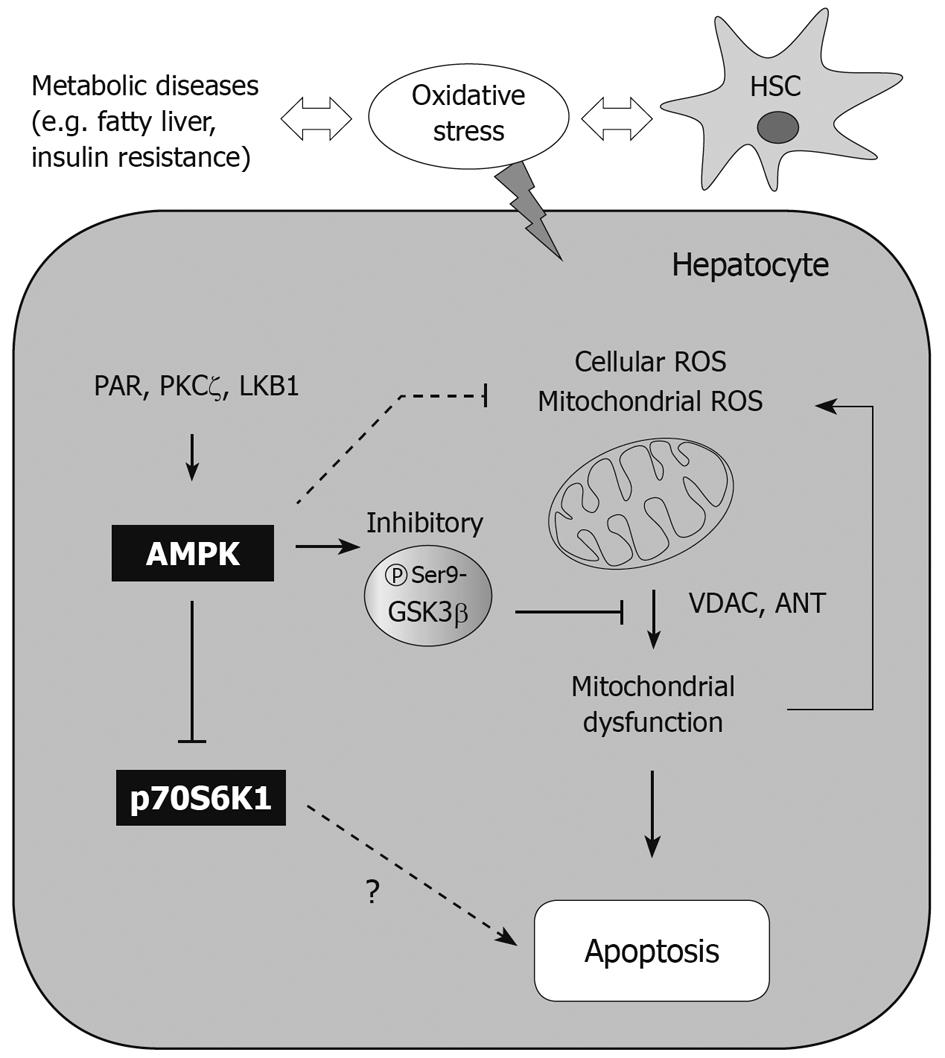Copyright
©2010 Baishideng.
World J Gastroenterol. Aug 14, 2010; 16(30): 3731-3742
Published online Aug 14, 2010. doi: 10.3748/wjg.v16.i30.3731
Published online Aug 14, 2010. doi: 10.3748/wjg.v16.i30.3731
Figure 2 Adenosine monophosphate-activated protein kinase regulation of cell viability.
Adenosine monophosphate-activated protein kinase (AMPK) protects cells from oxidative stress-induced H2O2 production and mitochondrial dysfunction, which results in part from the inhibitory phosphorylation of glycogen synthase kinase 3β (GSK3β). GSK3β inhibits mitochondrial function through voltage-activated anion channel (VDAC) phosphorylation. AMPK activation contributed to cell survival, whereas the regulatory role of S6 kinase-1 (S6K1) in apoptosis is still unclear. HSC: Hepatic stellate cell; PAR: Proliferator-activated receptor; PKC: Protein kinase C; LKB1: Liver kinase B1; ROS: Reactive oxygen species; ANT: Adenine nucleotide translocator.
- Citation: Yang YM, Han CY, Kim YJ, Kim SG. AMPK-associated signaling to bridge the gap between fuel metabolism and hepatocyte viability. World J Gastroenterol 2010; 16(30): 3731-3742
- URL: https://www.wjgnet.com/1007-9327/full/v16/i30/3731.htm
- DOI: https://dx.doi.org/10.3748/wjg.v16.i30.3731









